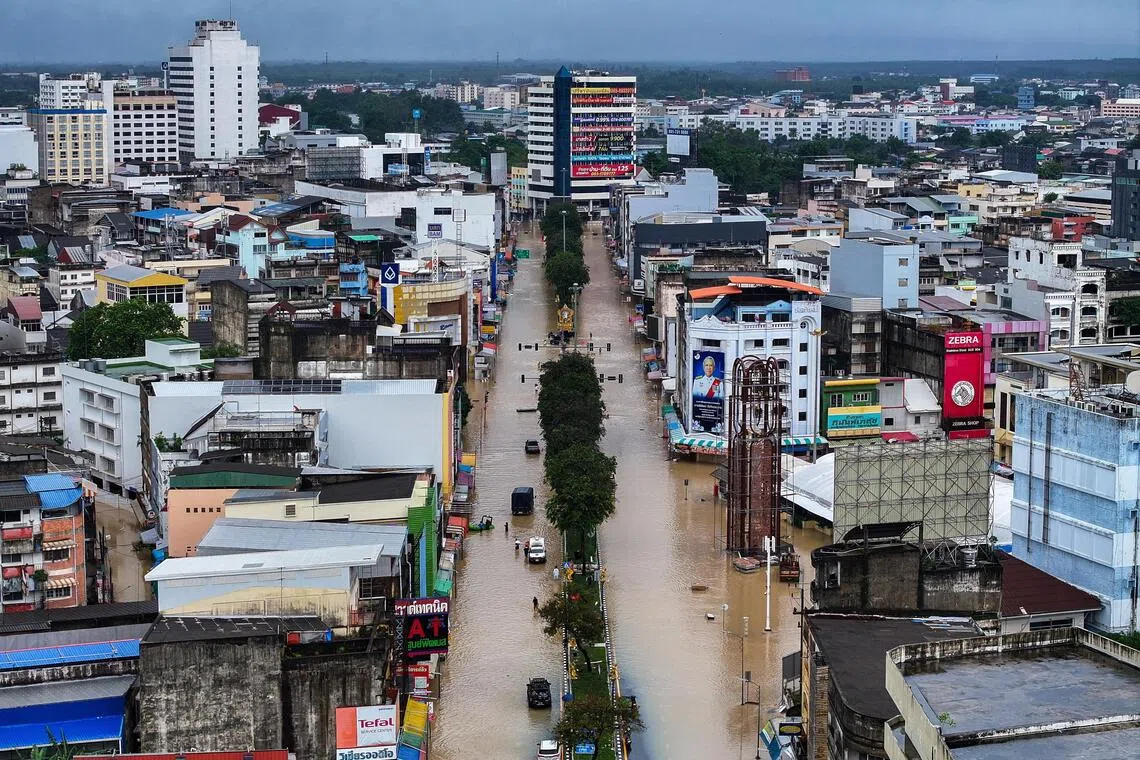Hat Yai property market drenched: Floods force major design overhaul
Sign up now: Get ST's newsletters delivered to your inbox

The disaster has caused over one billion baht (S$40.3 million) in estimated damage to essential infrastructure.
PHOTO: REUTERS
Follow topic:
BANGKOK – Southern Thailand’s recent flood crisis
Projects located in low-lying areas were particularly affected, triggering a sharp market downturn.
Crucially, a significant cohort of buyers from the three deep Southern border provinces – Yala, Pattani and Narathiwat – have deferred property purchases pending a full re-evaluation of flood risk.
Industry experts believe the crisis will permanently reshape future property development in the regional economic hub.
The new focus must be on flood-resilient design, which is already driving up demand for land in higher-elevation areas.
Market confidence in Hat Yai is projected to take approximately three years to fully recover, especially in locations known for recurrent inundation.
Billion-baht damage and strategic shift
The disaster marks the worst natural calamity since 2000, causing over one billion baht (S$40.3 million) in estimated damage to essential infrastructure, including roads, power and drainage systems.
The residential sector has borne the direct brunt
According to director of Research and Communication at Colliers Thailand Phattarachai Taweewong, Hat Yai held 128 active projects for sale, valued at over 41.5 billion baht, in the first half of 2025. This included 6,735 units in housing estates and 4,369 condominium units.
However, the recent flooding immediately inverted this positive outlook. Projects in vulnerable areas like Ban Pru, Hat Yai Nai, and parts of the city centre suffered severe losses.
Vulnerability of single-storey homes
Single-storey detached houses were the most heavily impacted, with internal structures compromised and furniture and fixtures largely written off.
Extensive re-wiring and plumbing repairs have created a dual financial burden for both homeowners and developers.
“For apartment blocks, the ground floor was completely submerged. This has tarnished the image of several developments, leading to the temporary closure of communal areas, ground-floor flats, and car parks. Landlords who invest to let are now reconsidering their repair and operating costs,” said Mr Phattarachai.
He stressed that the crisis exposes the disconnect between Hat Yai’s rapid urban growth and its outdated drainage capacity.
He argued that future property must be “designed to manage water”, shifting the priority from mere aesthetics to practical resilience.
Recommendations include:
Raising ground floor levels.
Converting ground floors of apartment blocks into multi-purpose amenity spaces.
Using water-resistant building materials.
Installing electrical systems above recorded maximum flood levels.
Comprehensive citywide improvements to canals and pipe networks.
Regional demand wanes
Hat Yai serves as a crucial residential hub for people from Yala, Pattani and Narathiwat seeking second homes or accommodation for their children’s education.
This demand, previously strong enough to attract major developers like AP Thailand, is now on hold while regional buyers await new risk assessments. THE NATION/ASIA NEWS NETWORK

